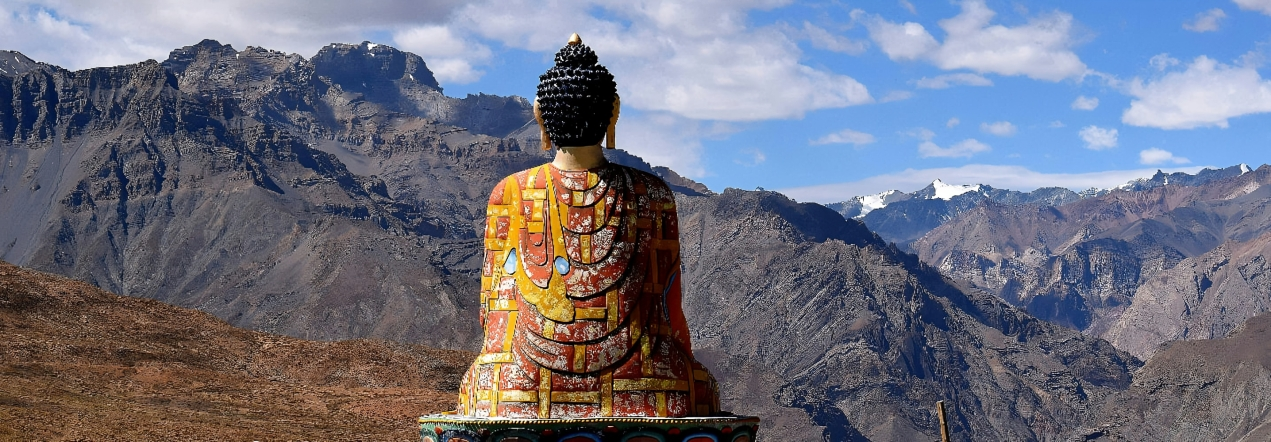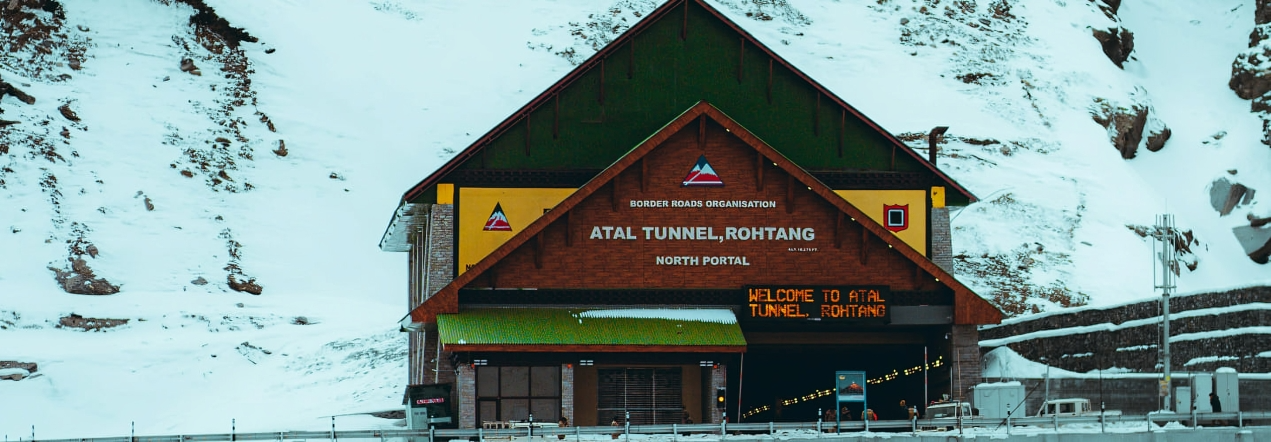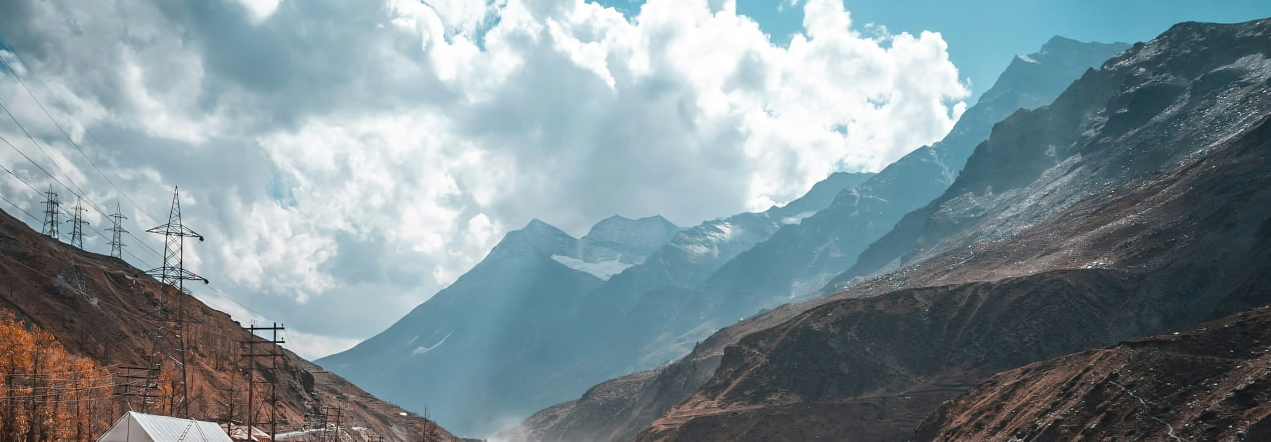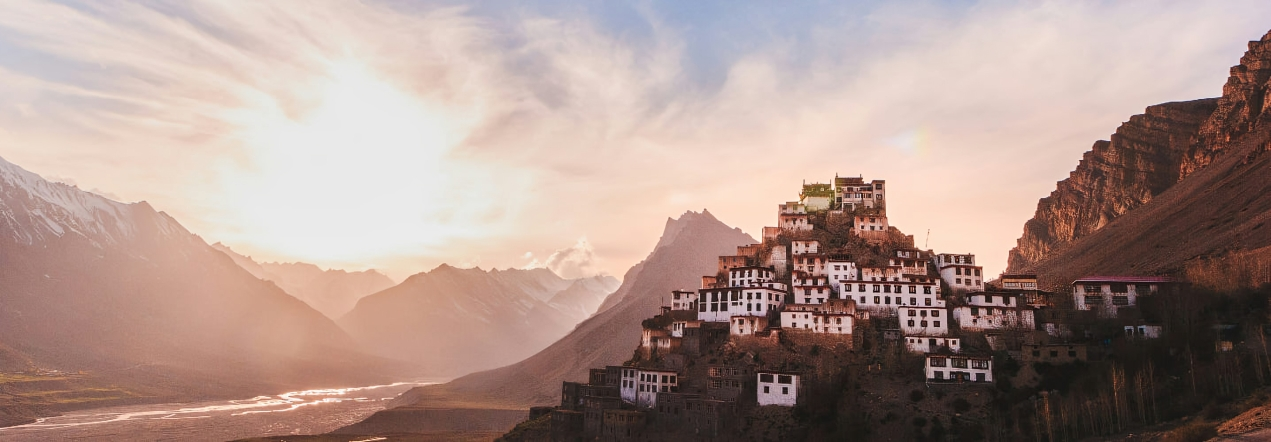This package includes a comprehensive itinerary covering the highlights of this remote and stunning region in the Indian state of Himachal Pradesh.
Trip Info
-
2 deluxe rooms on triple sharing. 2 extra beds included.
-
English, Hindi, Bengali
-
Breakfast and dinner. Daily morning tea.
-
Private AC XUV for sightseeing & transfer.
-
11
-
10
-
6
-
80
Overview
This package provides a glimpse into the rich cultural heritage and stunning landscapes of Himachal Pradesh, making it a memorable journey for travelers seeking adventure and relaxation alike.
Chandigarh(0N) → Shimla(1N) → Sarahan(1N) → Sangla(1N) → Kalpa(1N) → Tabo(1N) → Kaza(2N) → Chandratal Lake (1N) → Manali(1N) → Mandi (1N)
Trip Highlights
- At Chandratal Lake, set your camp
- Take enjoy Kalpa's expansive vistas of Kinner Kailash
- Fishing for trout in the Baspa River's pure waters
- meditative journey to Kibber Village and Ki Monastery.
- Take in the Chandra River Valley Drive while exploring Batal.
Itinerary
- Arrive at Chandigarh early in the day.
- Take a taxi from Chandigarh to Shimla.
- Go to Shimla and register at the hotel.
- Visit nearby sites such as Christ Church for sightseeing after a short period of recuperation.
- Constructed in 1857, the church is renowned for its neo-Gothic design.
- You are free to wander down the well-known Mall Road in the evening.
Visit the Gaiety Theatre in Scandal Point as well.
Spend the night in a hotel in Shimla.
- Set out for Sarahan via Kufri in the morning.
- Make stops along the route at Nirth, Dutt Nagar, and Rampur Bushehar, which are located in the Satluj Valley.
- An ancient Surya (Sun) temple built by Parshuram at Nirth is devoted to Shiva and Shakti.
- Dutt Nagar is renowned for its significance in archaeology.
- Arrive to Sarahan, a small yet lovely village. It is home to the ancient Bhimakali temple, which dates back around 1500 years.
- The finest views of the Satluj River and Srikhand Dhar are also available.
Spend the night at Sarahan.
- From Sarahan, set off for Sangla.
- At 2680 meters, Sangla is around 95 kilometers away from Sarahan.
- By Karcham, it takes four to five hours.
- Spend the night at Sangla.
- Depart for Chitkul from Sangla.
- This section of the road is quite steep and narrow till Chitkul.
- At 3,450 meters, Chitkul is the final and highest settlement in the Baspa Valley. It is located on the Baspa River's right bank. The native deity Mathi is honored in a temple that was supposedly built around 500 years ago.
- The settlement of Rackchham is the next stop.
- The settlement of Rackchham (2900m) lies in an unusual location, encircled by granite rock, woodlands, and the Rocky Mountains.
- See the fort and temple at Kamru.depart for Chitkul from Sangla.
- This section of the road is quite steep and narrow till Chitkul.
- At 3,450 meters, Chitkul is the final and highest settlement in the Baspa Valley. It is located on the Baspa River's right bank. The native deity Mathi is honored in a temple that was supposedly built around 500 years ago.
- The settlement of Rackchham is the next stop.
- The settlement of Rackchham (2900m) lies in an unusual location, encircled by granite rock, woodlands, and the Rocky Mountains.
- See the fort and temple at Kamru.
- With the Fisheries Officer's approval, one can go trout fishing in the Baspa River.
Kalpa (2960m), the district head quarters of Kinnaur on the Hindustan Tibet Road, is surrounded by snow-capped peaks and provides the closest view of Kinner Kailash (Shivlingam) summit. - Go to Ribba Gompa.
- Known for its grape fields, the 1000-year-old monastery Ribba Gompa is located between the towns of Purbani and Rispa. The renowned alcohol made from these grapes is known as ANGOORI.
- Stay the night at Kalpa.
- Travel through Nako to Tabo (3658m.)
- At Nako, halt (3664m.)
- Nako is located around two kilometers above the Hangrang Valley Road, facing the massive Pargil mountain to the west. The largest and tallest settlement in the valley is this one.
- Take a look at the monastery complex north of the settlement.
- The complex is named Locha-Lhakhang, or Lhostaba, Lhakhang, after the renowned Latsab Rin-Chen-Nagpo. It consists of four sizable Dugpa temples.
- Get to Tabo.
- On the left bank of the Spiti River is where Tabo is located. Encircled by towering hills, the community primarily adheres to Buddhism. However, the local Gyalbo, Dabla, and Yalso are Hindu deities.
- Spend the night in Tabo.
- Head for Kaza by car after an early breakfast.
- Go to the Tabo Monastery.
- The Tabo "Gompa," which was established in 996 AD and is sometimes referred to as the "Ajanta of the Himalaya" after the nearly mythical art treasure site in Maharashtra, is known for its beautiful wall murals and plaster figures. This is the greatest monastery complex in Spiti in terms of area, with nine temples, "chortens," a monks' chamber, and a nuns' chamber spread throughout the whole ancient part.
- The Tabo complex consists of multiple caverns as well as modern buildings. Tabo is now recognized as a "World Heritage Site" by UNESCO.
- Set off driving via Dhankar towards Kaza.
- Spend the night at Kaza.
- Go to Kaza; it's 3600 meters high.
- It houses the Spiti administration's main office, a marketplace, healthcare facilities, and a gas station. It acts as the hikers' starting point.
- Take some free time to explore and shop at Kaza.
- Go in the direction of Kibber Village (4205m).
- With a motorable road connecting it, it is the world's highest permanently inhabited settlement. It serves as the starting point for a number of hikes to high heights.
Wintertime temperatures in Kibber fall below -35 C. - Explore Kibber first, then go to Ki-monastery.
- Ki Monastery sits next to the road and 11 miles down the route. In honor of His Holiness the Dalai Lama's auspicious August 2000 Kalachakra initiation for global peace, it has commemorated its 1000th anniversary. Rare "Thangka paintings" can be found in Ki, and trumpets, cymbals, and drums are probably among the ancient musical instruments. Manuscripts of the holy Thangyur scripture are kept in its library. The monastery is not far from the settlement of Ki.
- Spend the night in Kaza.
- Reach Chandratal Lake, sometimes referred to as "The Lake of Moon".
- This trip takes around three hours if the roads are in excellent shape; if not, one must trek to the lake.
- It would take two hours or less to hike up to the lake after setting up camp in the hazardous location.
- On the same day, head back to the campground.
- Return to the base of Kunzum Pass via car.
- Investigate Batal.
- The final settlement in the Spiti Valley, Batal is a little hamlet with a few tea houses. At the base of the Kunzum Pass is where it is located.
- Sip tea while admiring the Chandra River's beauty.
- Proceed to drive through the difficult and precipitous Chandra river valley to reach Chota Dara, Chhtru, and Grampoo.
- You may see the Bara Shigri glacier along the route. The Glacier is a massive mass of solid ice that spans ten kilometers and is more than a kilometer broad. It splits the valley into Lahaul and Spiti at Grampoo.
- The left cut at Grampoo leads to Rohtang and farther down to Manali, whereas the right cut at Grampoo leads to Lahaul & Leh.
- Drive down the Chandra River from Grampoo, taking in the breathtaking sights of the rocky, mountainous valley.
- Arrive at Manali late at night.
- LVisit the Tibetan Monastery, Hadimba Devi Temple, Manu Temple, Van Vihar, Hong Kong Market, Vashisht Village, and Vashisht Hot Springs in the morning.
- After lunch in the afternoon, head towards Naggar.
- Check out the Naggar Castel Museum and Art Gallery.
- Visit Kullu and then Mandi after this.
- Return in the late evening to the hotel.
- Spend the night in Mandi.
- Start off for Chandigarh in the morning.
- Arrive in the afternoon at Chandigarh.
- Drop at Chandigarh to continue your travels.
Includes/Excludes
Cost Includes
- Arrival welcome drink (non-alcoholic).
- Accommodations: Two luxurious rooms shared by three people.
- Included are two more beds.
- both supper and breakfast.
- Every morning tea.
- Includes all taxes.
- Children under five years old are free (no additional bed needed).
- Meal just for vegetarians (non-vegetarian meals are billed directly to the hotel).
- For transfers and sightseeing, choose a private AC XUV.
- permits, taxes, tolls, and driver allowances.
- All service and hotel taxes.
Cost Excludes
- Train passes.
- All admission fees and guide costs.
- any meal that wasn't already covered.
- Any additional personal costs, such as laundry, groceries, tips, etc.
- costs for entering monuments, using cameras, and using heaters.
- any adventurous sport, such as rafting, skiing, or paragliding.
FAQs
The best time to visit Lahaul and Spiti is during the summer months from May to October when the weather is relatively mild and the roads are open for travel. However, some adventurous travelers also visit during the winter months to experience the snow-covered landscapes.
Depending on the tour package, activities may include visiting monasteries, exploring remote villages, trekking in the Himalayas, camping under the stars, and experiencing local culture through interactions with the people of the region.




